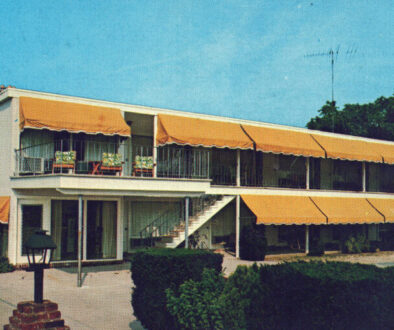The Craftsman Style
There’s a Craftsman library table waiting for you at Treehouse Antiques in Lower Township. It’s constructed of quarter-sawn oak with cutout detailing and square drawer knobs. Although not a Gustave Stickley piece, it contains many of the same elements. Oak wood, machine carved detail, wooden drawer dowels instead of machine-made screws, all give the piece a utilitarian appearance as in the more expensive Craftsman pieces. Arrow-shaped cutouts detail the front, serving a dual purpose of not only being aesthetically pleasing, but practical. The openings on each side allow light in and hold a shelf for book storage.
As in any popular design, be it a hundred years ago or today, furniture companies followed the Stickley works by creating their own versions. This well-constructed library table is such a case. The quartersawn oak adds value and is highly regarded by furniture makers. This cutting technique creates stability and is more durable than rift-sawn oak. Grain patterns become prominent, and from the furniture maker’s perspective only adds to the uniqueness of a piece. In addition, quarter-sawing the oak makes the wood grains straighter and stable, preventing the boards from warping, a condition often seen in rift sawn oak. Red oak can only be quarter sawn. Today, educated buyers—not only in furniture but also in kitchen cabinetry and countertop selection—understand the difference and quarter-sawn oak is back in fashion.

In the early 1900s, American born Gustave Stickley developed the “Craftsman” style based on the earlier Arts and Crafts movement out of mid-century Britain. Earlier, John Ruskin, an English writer/philosopher, emphasized the importance of craftsmanship in furniture design. He believed that the industrial revolution created a labor force of servants. Rather, Ruskin placed value on independent crafts by people who could expertly design and build each piece of furniture. This would create an “honest” workforce producing honest pieces as opposed to the “dishonest” pieces that were produced in a factory. Consequently, his ideology stated, the morals and health of society would greatly improve.
It was an outcry against previous industrial-age furniture with its mass production and garish embellishments. Machines had replaced individuals and their craft, adding to a decline in quality. The Craftsman movement spoke volumes about the manufacturing industry. Now the focus was on time-honored skills. Forgoing factory production, furniture artisans used their skills to create pieces vastly different from previous furniture making. Hand-hewn wood furniture, nonexistent in postindustrial pieces, was sought out. Value was now placed on basic furniture designs and its craftsmanship. The trend was similar to today’s contemporary design.
No longer hiding a furniture maker’s craftsmanship, mortise and tenon joints were highlighted. Tool marks, as proof of the maker’s handiwork, became desirable. Often, a geometric design added to the piece’s uniqueness. The furniture was made to accentuate the wood grain, honoring its beauty. There was a newfound respect for artisans and their crafts. Other traits seen in Craftsman furniture are the evenly spaced openings and knobs that are either round or square. Another example would be an oak trestle table, void of lacquered veneers and constructed with slabs of oak with cross-braced supports that lock into sizable carved out keyholes. The pieces interlock like a puzzle—a perfect example of a well-constructed piece without the need for metal hardware.


Not to say furniture makers didn’t use lathes, grinders, planers, and more, but power tools were used sparingly. The Craftsman designers were in opposition to the assembly line and the persistent use of heavy equipment, which took skilled craftsmen out of the equation.
Even today, we are witnessing a shift from mass produced furniture as buyers have become more selective. Some incorporate one or two handcrafted pieces discovered in antique shops alongside their existing furniture. Consider a piece of Craftsman furniture to be like a fine work of art in the interior design of a home or office.
Not only was furniture produced, but also pottery, metalwork, jewelry, and photography including Wallace Nutting’s hand-colored photographs with interior staged scenes, or exterior pastoral images. The early Van Briggle ceramics were handcrafted using simple designs in their signature matte glazed finish.
These artisans influenced other craftsmen as artist’s enclaves began to spring up across the country. One such enclave was in Rose Valley, Pennsylvania. Produced on a small scale were ceramics, photography, jewelry, and furniture. Many of the pieces borrowed elements of the Craftsman style. A Craftsman chair may have an angled back with smaller slats for comfort. The arms are designed with a wide curved area to rest your hands. A library table may contain Gothic elements in its design. Although the shops operated at the same time as the Arts and Crafts movement, it spoke more for the inventiveness and artistry of the craftsmen. This was not a luxury for Stickley furniture that produced thousands of pieces as opposed to Rose Valley furniture, which only produced a few hundred pieces.
By 1917, near the end of World War I, communities such as these were slowly disbanded as a resurgence of the industrial age took place. However, there were some groups in Philadelphia and surrounding artist communities that continued their craft, making a recovery in the post-war era. Renowned artist/furniture makers like George Nakashima and Wharton Esherick helped to keep the craft movement alive even to this day.



